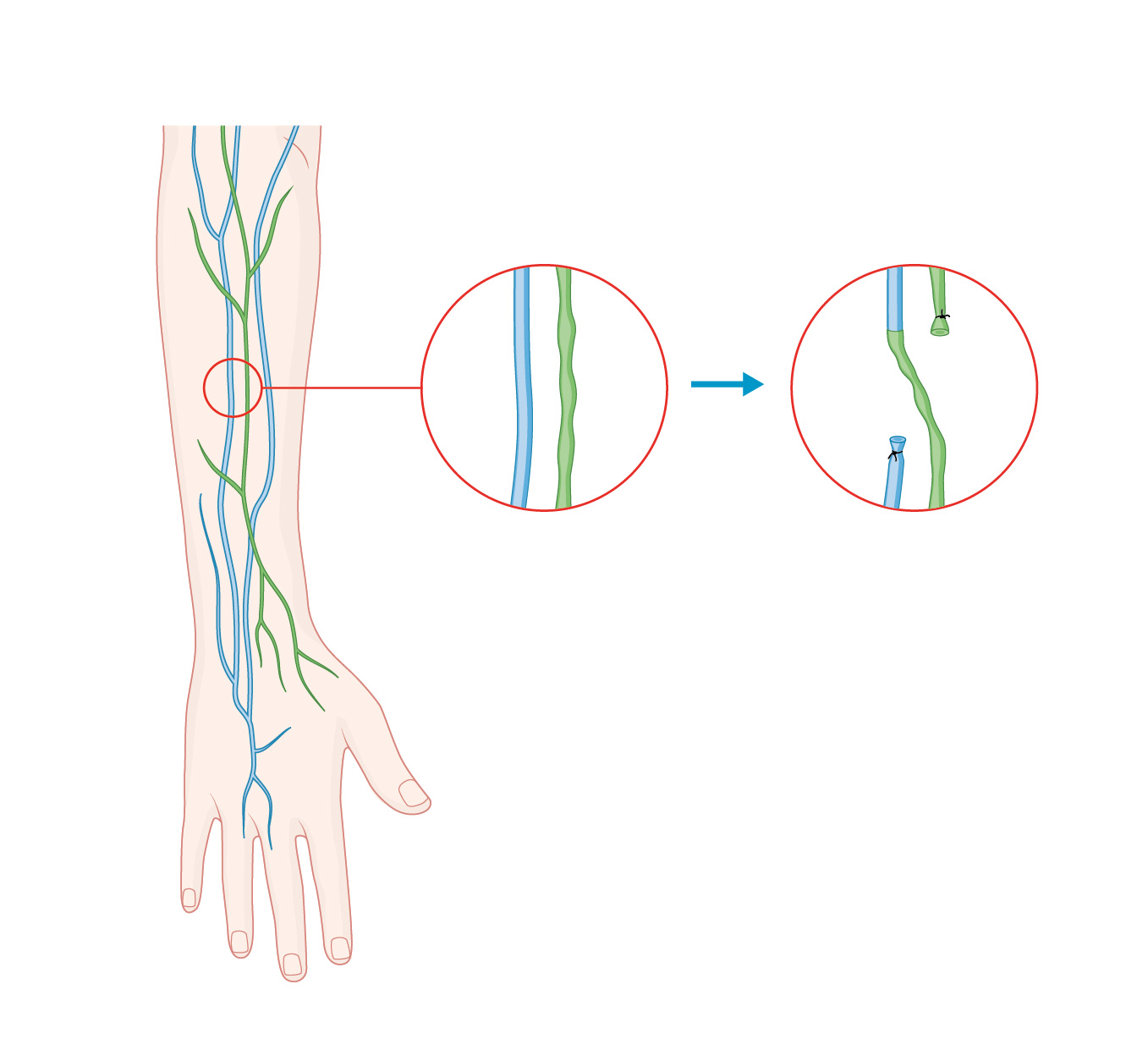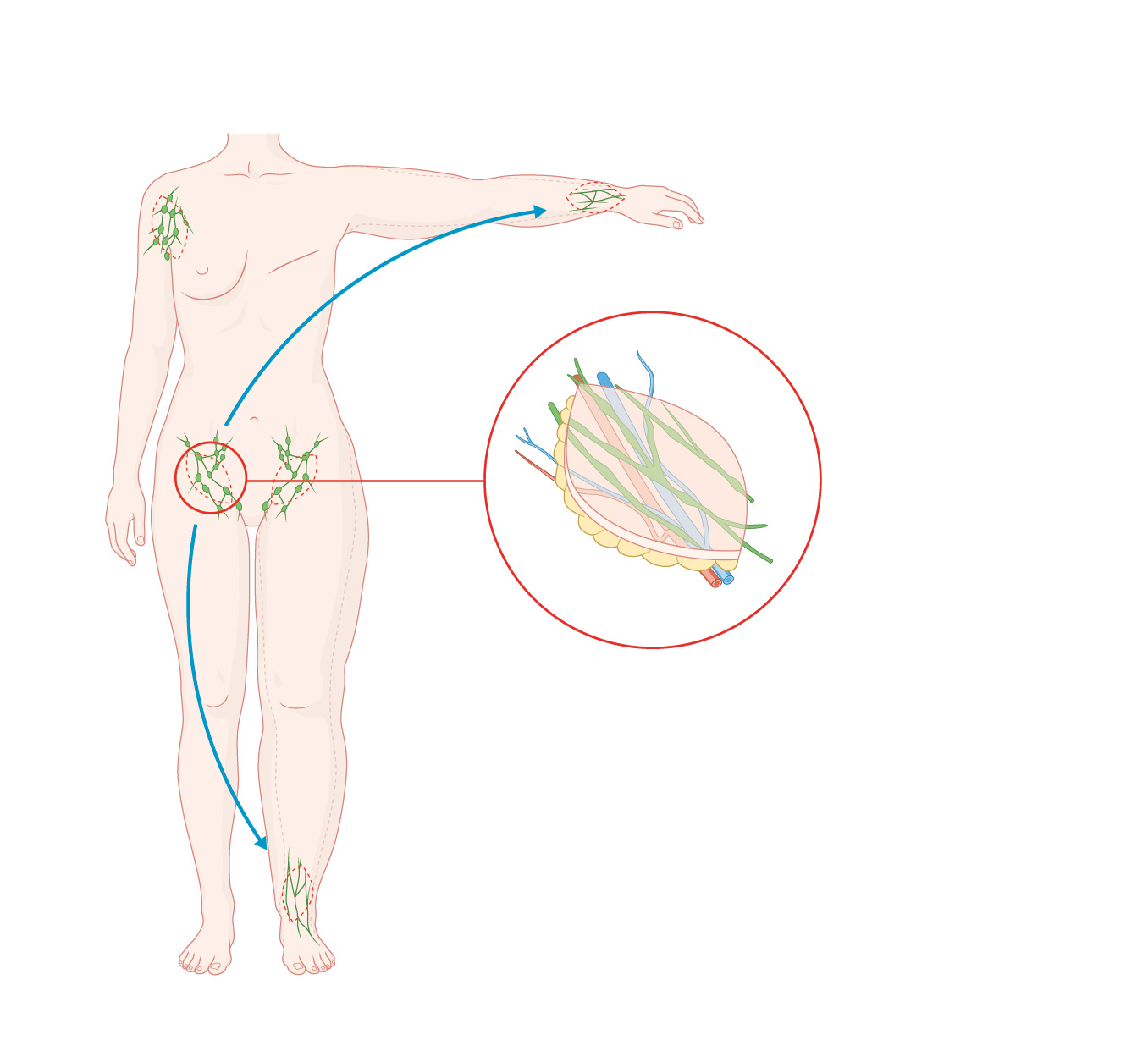WHAT IS A LYMPHOCELE?
A lymphocele is an accumulation of lymph fluid outside the physiological lymphatic system. Lymphoceles most frequently occur as a result of surgery. However, they can also spontaneously occur without a clear cause.
WHERE DO LYMPHOCELES OCCUR MOST FREQUENTLY?
Lymphoceles occur most frequently in the pelvic area but can also develop in the abdomen, chest, limbs or neck.
WHAT ARE THE TYPICAL SYMPTOMS OF LYMPHOCELES?
Many lymphoceles are small and do not cause any symptoms. However, larger lymphoceles can cause pain, swelling and other symptoms, depending on where they are located. They can also lead to infections.
Depending on their position, common symptoms of lymphoceles include:
- Pelvis: Pain in the lower abdomen, swelling in the groin or scrotum, frequent or urgent urination, constipation.
- Abdomen: Abdominal pain, swelling, nausea, vomiting
- Chest: Chest pain, shortness of breath, coughing.
- Neck: Neck pain, swelling in the neck or face.
WHAT ARE THE MOST COMMON CAUSES?
Surgical procedures are the most common causes of lymphoceles. If the lymphatic vessels are damaged during a surgical procedure, lymph can leak into the surrounding tissue, leading to an accumulation of fluid.
Lymphoceles can also be caused by:
- Trauma: Injury to the lymphatic system can cause the formation of lymphoceles.
- Radiotherapy: Radiotherapy can damage lymphatic vessels and lead to the formation of lymphoceles.
- Cancer: Cancer can block or damage lymphatic vessels, which can lead to the formation of lymphoceles.
- Infection: An infection can cause inflammation of the lymphatic vessels, which can lead to the formation of a lymphocele.
HOW ARE LYMPHOCELES DIAGNOSED?
Lymphoceles are usually diagnosed via a physical examination in conjunction with imaging procedures such as ultrasound, lymphoscintigraphy, ICG lymphangiography, computed tomography (CT) or magnetic resonance imaging (MRI).
These investigations allow the size and position of the lymphocele to be determined precisely and other conditions, such as haematomas or abscesses, to be ruled out.
HOW ARE LYMPHOCELES TREATED?
Small lymphoceles can disappear on their own without any treatment. However, larger lymphoceles that cause symptoms may need to be treated.
Compression:
Compression stockings or bandages can help to reduce swelling and pain.
Drainage:
A needle or catheter can be inserted into the lymphocele to drain the fluid.
In some cases, surgery may be required to remove the lymphocele or repair the damaged lymphatic vessels using lymphovenous anastomosis (LVA) or vascularised lymphatic vessel transfer (VLVT).
Lymphovenous anastomosis (LVA) Vascularised lymphatic vessel transfer (VLVT)
Vascularised lymphatic vessel transfer (VLVT)
HOW SUCCESSFUL IS THE TREATMENT?
The prognosis for lymphoceles is generally good. Most lymphoceles can be successfully treated by drainage or surgery. However, some lymphoceles may reappear after treatment.
Technically challenging procedures such as the surgical treatment of lymphoceles should always be carried out by experienced specialists. This enables the complication rate to be reduced to an absolute minimum and greatly increases the likelihood of success.
Our specialist Professor Mario Scaglioni has many years of experience and a great deal of expertise in lymphatic surgery.
He will take comprehensive, expert and personal care of you and your needs and concerns.
Contact us online or by phone to arrange your individual appointment.